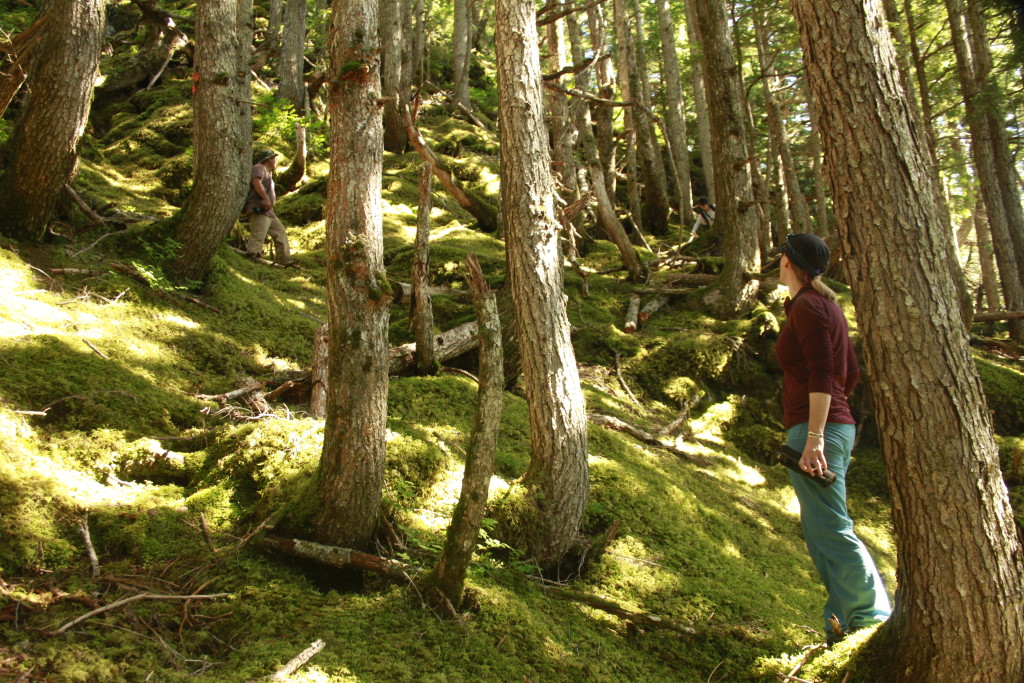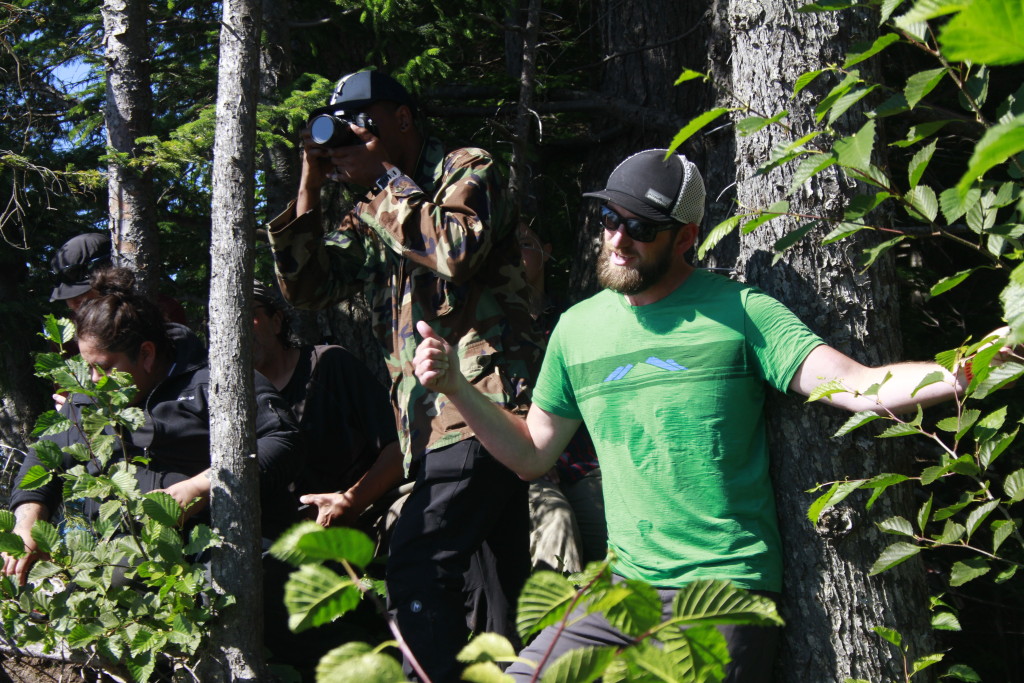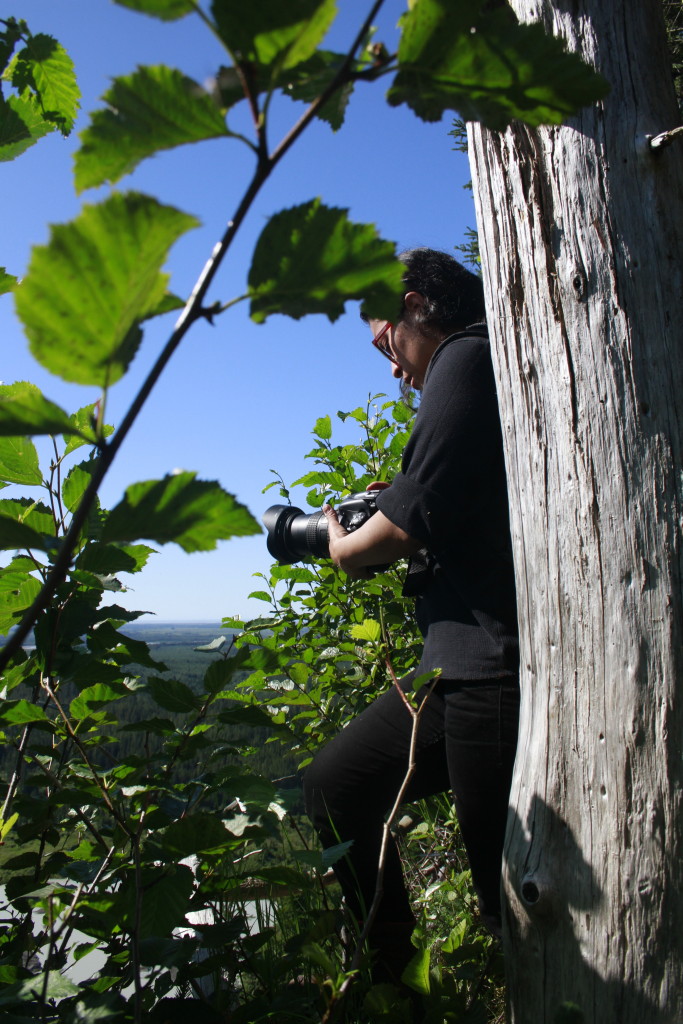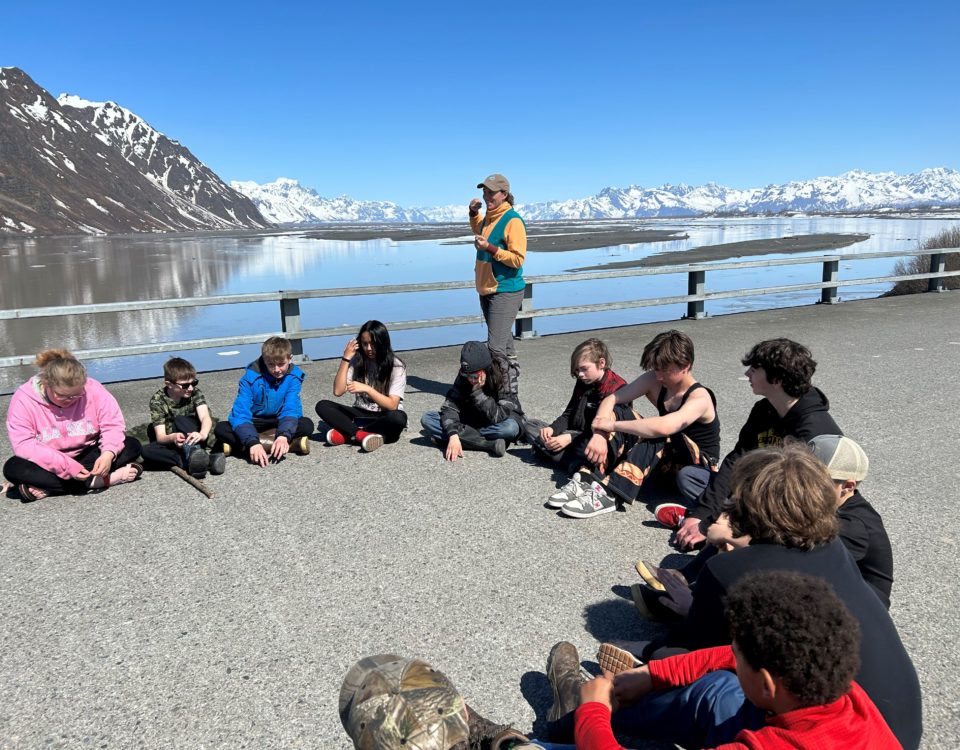NYC Photography Students Learn from Science Center Researchers

From the sky scrapers of New York City to the mountain-scraping glaciers of Alaska, a visiting class of budding photographers recently joined Science Center researchers on an in-depth exploration of our local environment. After gaining insight into Science Center research, exploring the intact ecosystems of the region, and getting to know the community, professor and professional photographer, Scott Sternbach said of their experience, “there is some hope in the world, and we found it in Cordova.”

Science Center research ecologist Dr. Kristen Gorman hikes with LaGuardia students on Sheridan Mountain Trail.
After guiding similar courses in Patagonia, Sternbach decided to develop an Alaska-based photography field course. Coming from LaGuardia Community College, a component the City University of New York, Sternbach said that Cordova sparked his interest because of the combination of both scientific and cultural opportunities available here. He learned of Cordova through Dr. Kristen Gorman, an old friend that he’d met in Antarctica where she was conducting research on Adélie, chinstrap and gentoo penguins at the time. Gorman now works at the Science Center as a research ecologist and was eager to introduce these students to the lush rainforests and rich waters of Cordova.

Research assistant Caitlin McKinstry shares the meticulous techniques behind her plankton photography with visiting photography students.
Soon after their arrival, Science Center scientists presented their research for the class to provide them with a background of the environment they would be exploring. Later in the week, students donned waders to walk into Hartney Creek and were amazed by their close proximity to the salmon passing by on their epic journey upstream. After Gorman provided an overview of the salmon life cycle and how salmon nutrients help fuel the forests surrounding river banks, Gorman recalls their amazement, as one student exclaimed, “I will never look at a fish the same way again!” Gorman enjoyed sharing these activities with the students, and stated that “it was fun to facilitate a mind-blowing experience for them.”
Later in the week, students were awestruck again when they got up-close and personal with Sheridan Glacier. After hiking up the arduous Sheridan Mountain Trail, students agreed that it was well worth the view of the glacier.

Post-doctoral researcher Josh Williams shares his extensive glacier knowledge with students on the ridge overlooking Sheridan Glacier.
From teaching about how glaciers carve u-shaped valleys to how glacial deposition influences the local fishery, post-doctoral researcher Josh Williams led a ‘glaciology 101’ talk while overlooking Sheridan from the ridge. On the hike back, photography student Enrique Rosas described that the goal of his photography is to “make people feel something,” and he was amazed at how this place does it naturally.
By the end of their visit, Professor Sternbach was thankful to the community for making them feel so welcome. Students felt the same way, as they met many fishermen who were willing to share their stories, and also raved about a local family that invited them into their home and shared homemade salmon jerky.
Before leaving Cordova for Arctic Village,
students shared their videos and photos through a presentation at the Cordova Center, impressing several community members who expressed interest in using their beautiful work in future outreach materials. Overall, Sternbach noted that “we have been greeted so warmly by everyone we’ve met; it’s almost surreal.” Science Center staff was happy to share the ecosystems and abundance of this region, but it was the entire community that completed their experience.





